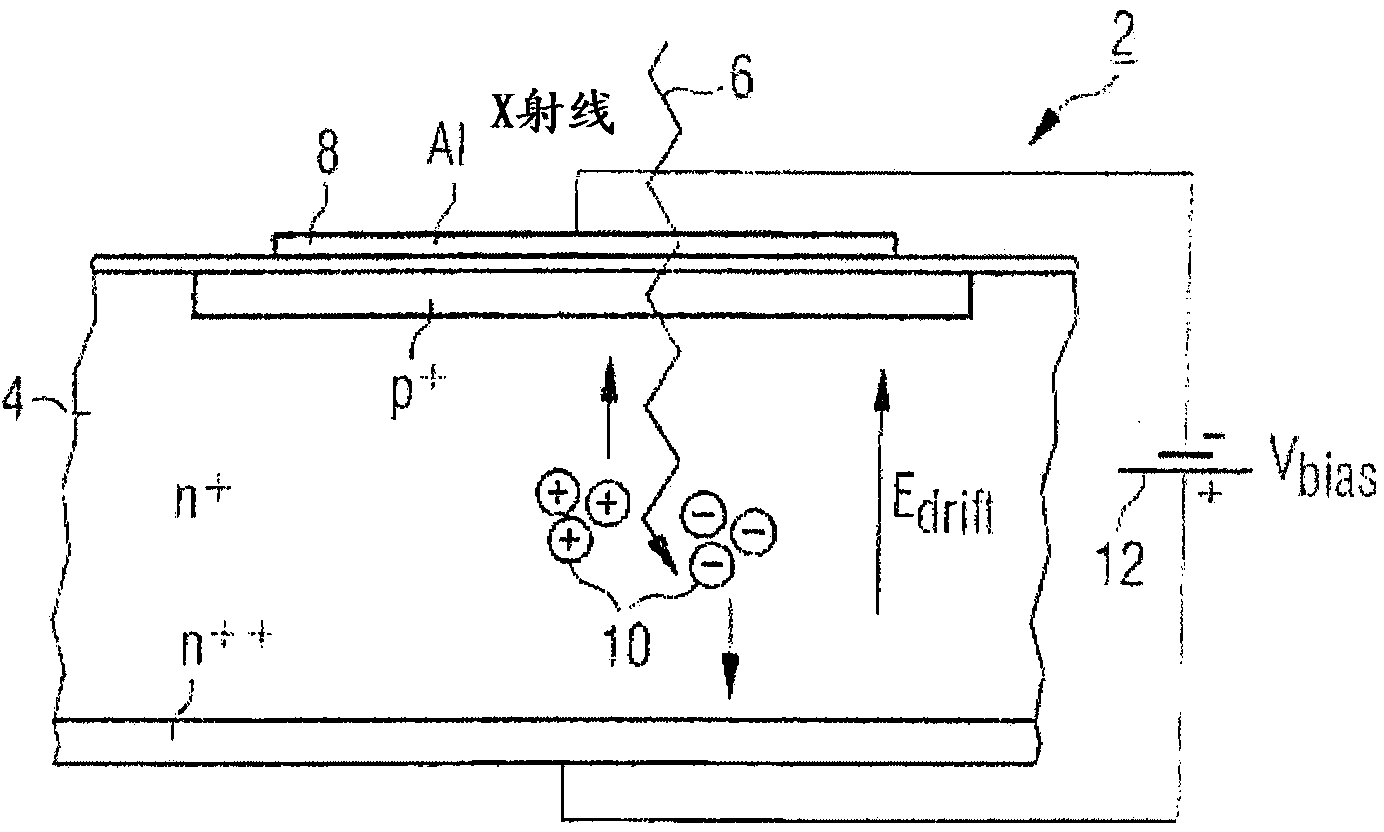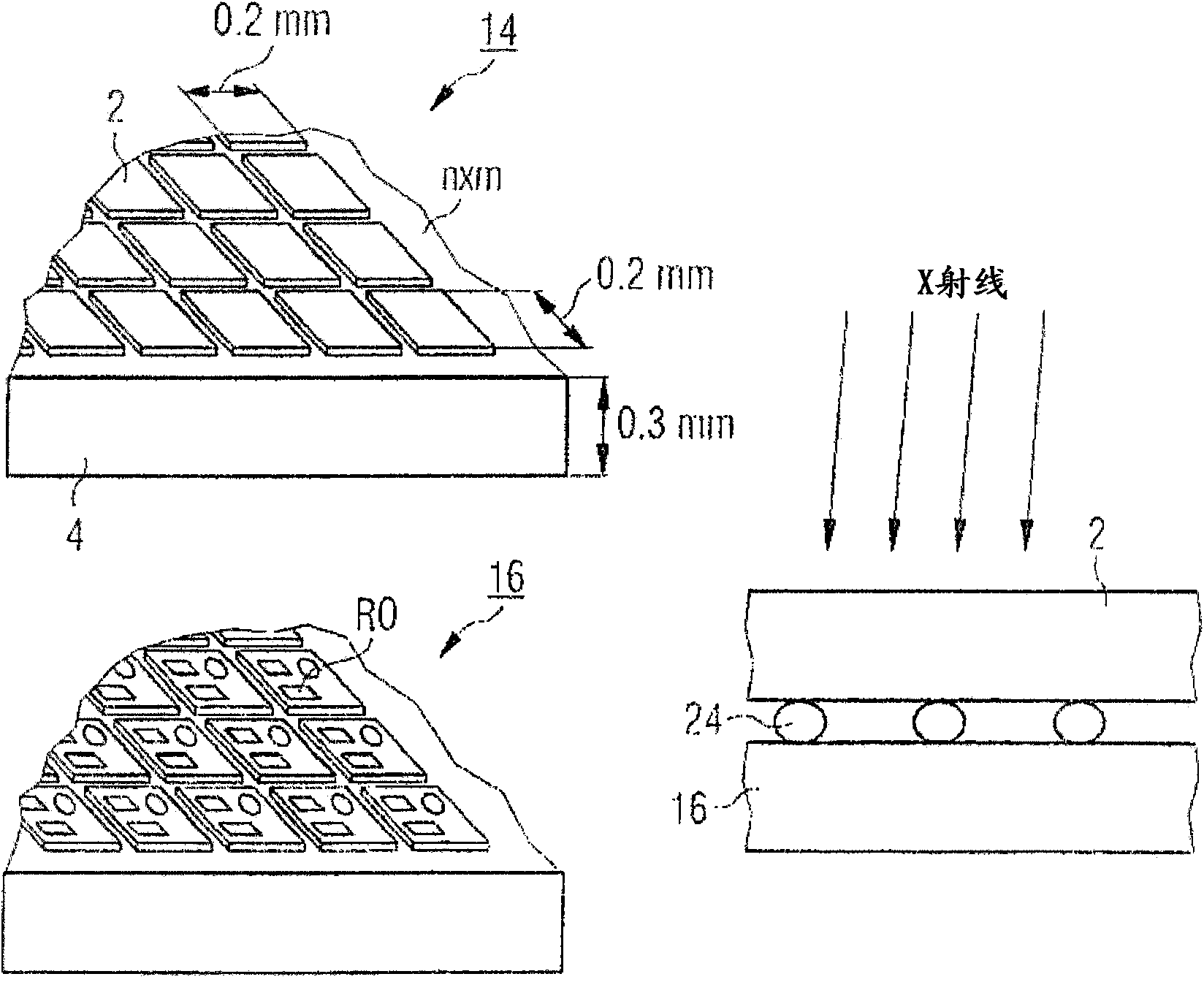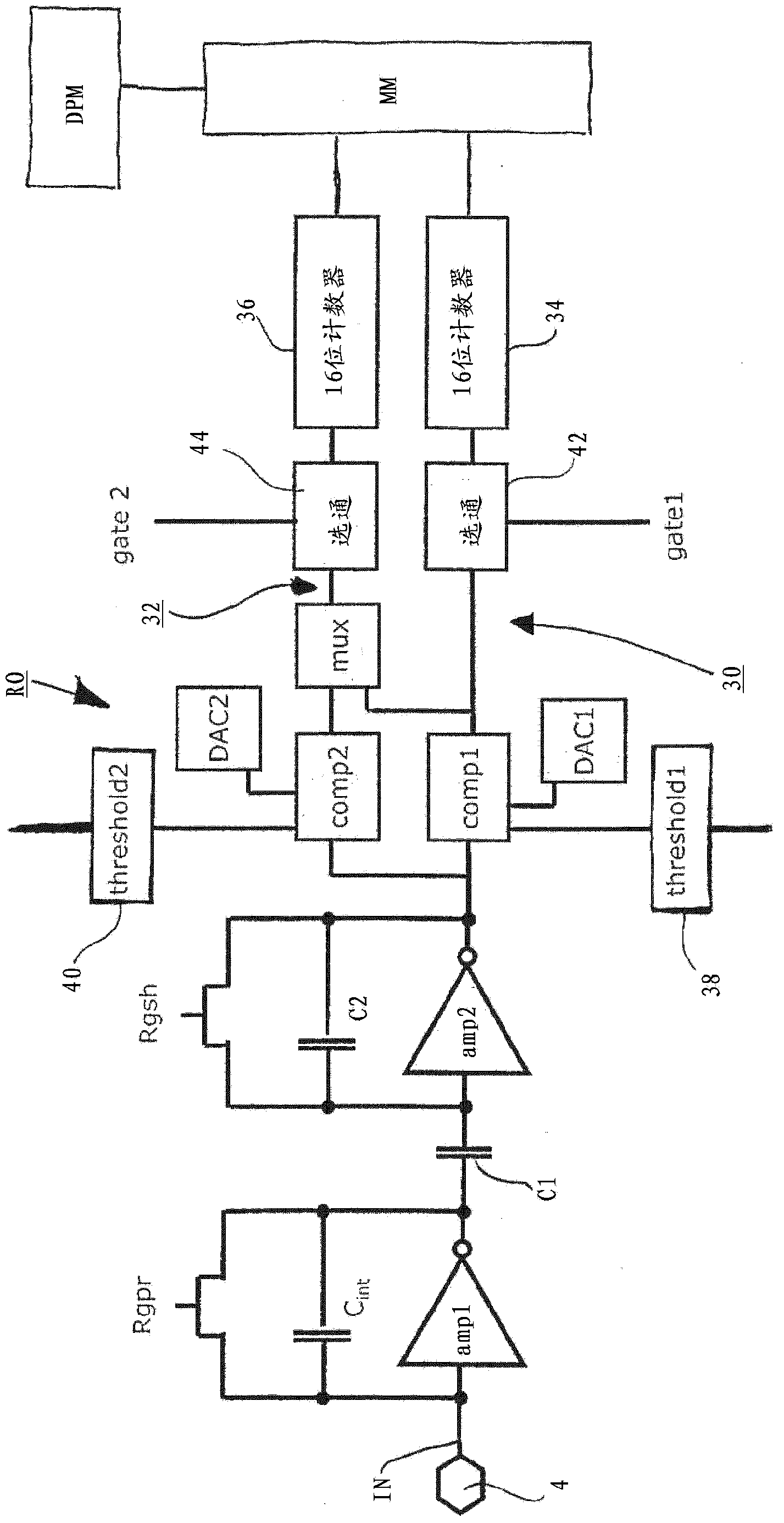Single photon counting detector system having improved counter architecture
A detector system and single photon counting technology, applied in radiation measurement, TV system components, instruments, etc., can solve problems such as limited statistical data
- Summary
- Abstract
- Description
- Claims
- Application Information
AI Technical Summary
Problems solved by technology
Method used
Image
Examples
Embodiment Construction
[0029] figure 1 Schematically shows a doped semiconductor p + , n - , n ++ The structure of the photodetector diode 2 of the intrusion part 4 . The most commonly used material is silicon crystal, but germanium, gallium arsenide or cadmium telluride can also be used.
[0030] Incident photons 6 having energies in the range of 100 eV to several Kev are entering the doped semiconductor p + , n - , n ++ The intrusion part 4 is preceded by a possible covering layer (eg aluminum) 8 and after x-ray absorption a corresponding number of electron-hole pairs 10 are generated according to their energy and the energy required to establish them. In the figure, these numbers of electron-hole pairs are exemplarily shown as three electron-hole pairs 10 divided by the electric field generated by the bias voltage source 12 .
[0031] figure 2A schematic diagram of a two-dimensional pixel detector 14 with a large number of photodetector diodes 2 arranged in an array of n rows and m colum...
PUM
 Login to View More
Login to View More Abstract
Description
Claims
Application Information
 Login to View More
Login to View More - R&D
- Intellectual Property
- Life Sciences
- Materials
- Tech Scout
- Unparalleled Data Quality
- Higher Quality Content
- 60% Fewer Hallucinations
Browse by: Latest US Patents, China's latest patents, Technical Efficacy Thesaurus, Application Domain, Technology Topic, Popular Technical Reports.
© 2025 PatSnap. All rights reserved.Legal|Privacy policy|Modern Slavery Act Transparency Statement|Sitemap|About US| Contact US: help@patsnap.com



